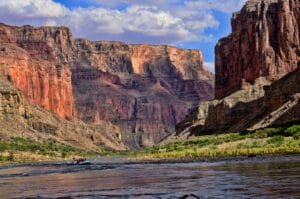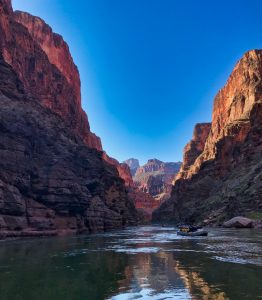The Department of the interior will conduct a high flow experimental release next week from Glen Canyon Dam. This is consistent with the High-Flow Protocol and is related to the sediment input that has occurred below Glen Canyon Dam. Those on our “Epic” September rowing trip through the Grand Canyon know the area received an incredible amount of precipitation with the Paria River and Little Colorado River bringing over 5000 cfs each into the system at one time during September. Supposedly there is about three times more sediment in the system this time compared to the last high flow experiment in 2012.

This management of the Dam is done to restore the beaches and habitat in the Grand Canyon. The idea is to bring sediment up from the bottom of the river and deposit it on the sides in the form of beaches. Before Glen Canyon Dam the Colorado River would flood every spring and leave behind huge amounts of sand as the water receded into summer and fall. This would clear off the vegetation below the high water line and clean the sand on the beaches. The hope of these high flow experiments is to recreate these conditions. These conditions still happen naturally above Glen Canyon Dam in Canyonlands National Park and Cataract Canyon.
The real difference between the historic floods and these man-made floods is the volume of water and length of time of the flood. A natural spring flow in the Grand Canyon would regularly bring 80,000 to 125,000 cfs while the scheduled man-made flood this time around is expected to peak at 37,200 cfs and last about 96 hours. Another thing that puts a big damper on beach building is the loss of sediment in the Colorado River due to Glen Canyon Dam. As Lake Powell slows the water of the Colorado River the sediment all drop out. This is why below Glen Canyon Dam the water comes out clear and cold..,,
Our experience on the river has been incredibly beautiful beaches immediately after one of these flooding events. Unfortunately, as the season goes on the beaches tend to return to their original size or even smaller due to the fluctuating dam flows, monsoons, and natural weather conditions. This loss of sediment is a huge problem and we commend those who have worked so hard to get this adaptive management in place. As the population continues to rise in the southwest the demand on the water is increased every year we hope new solutions will continue to arise and the Grand Canyon as a resource will always be protected.





